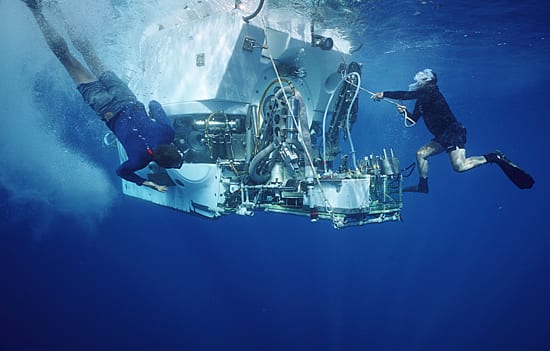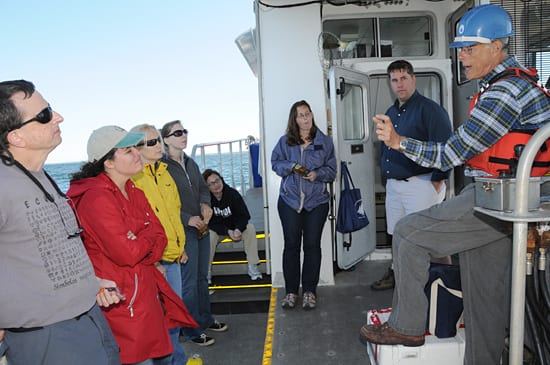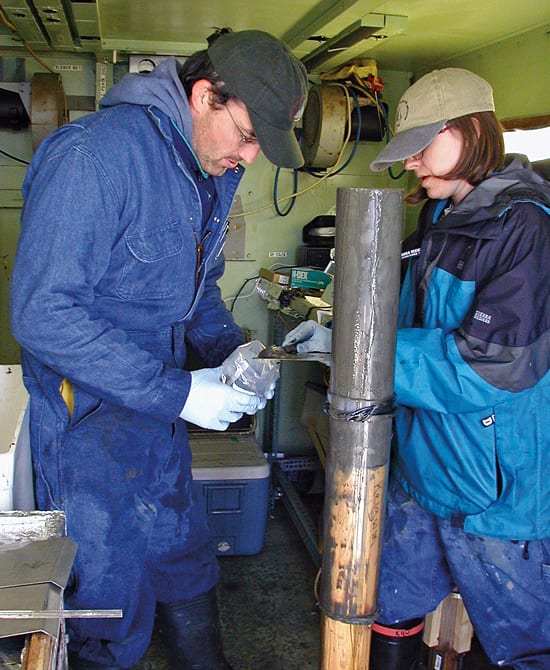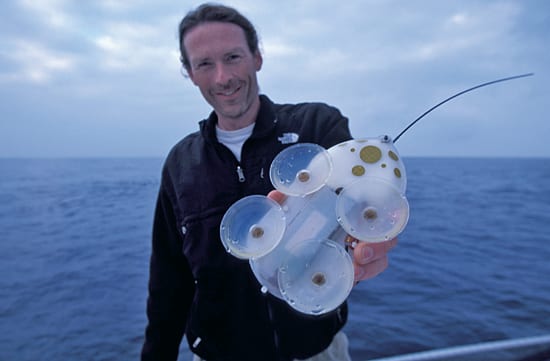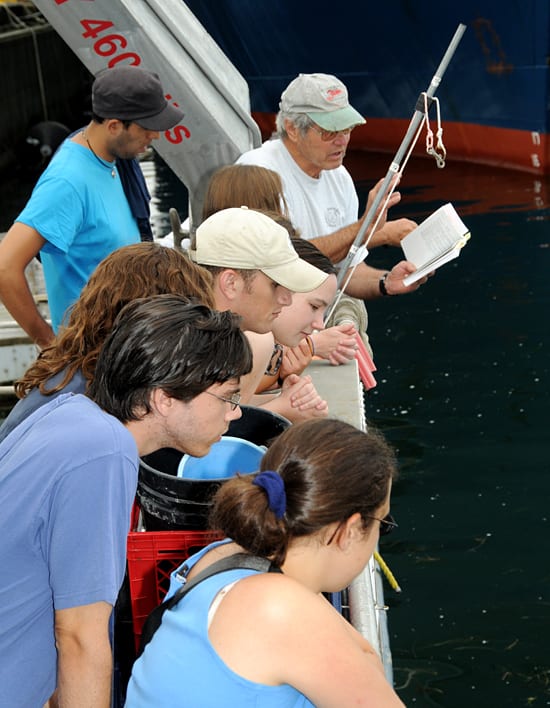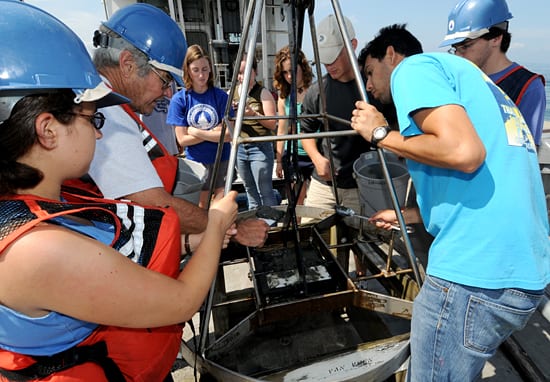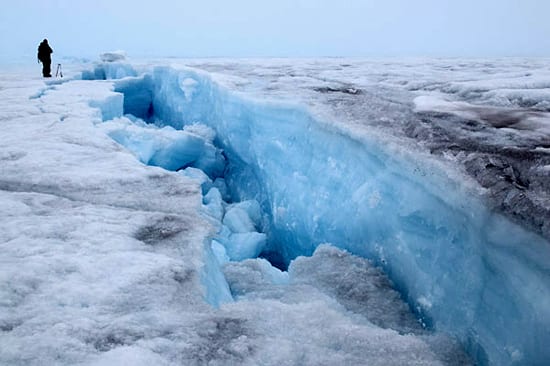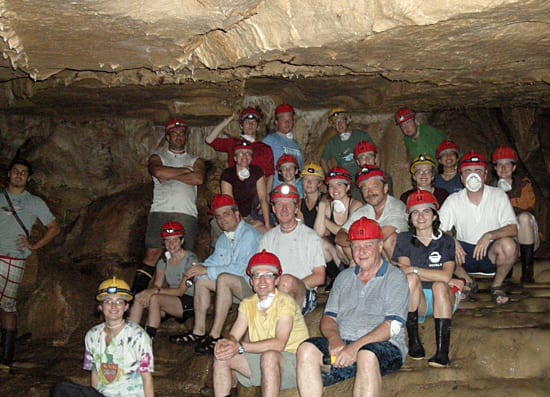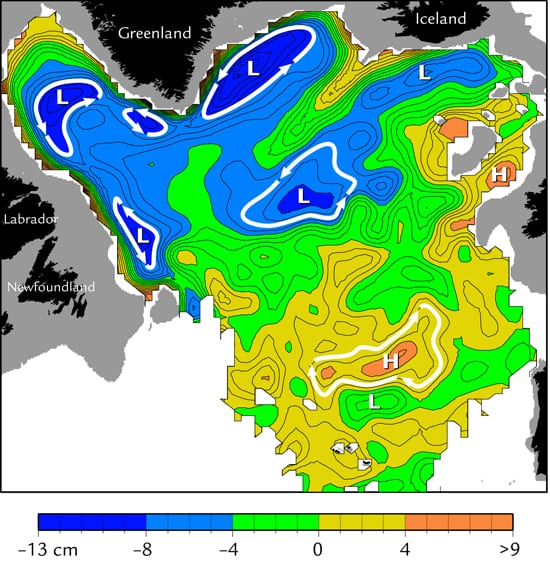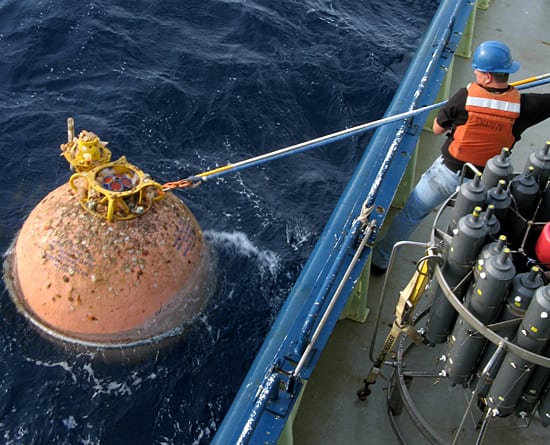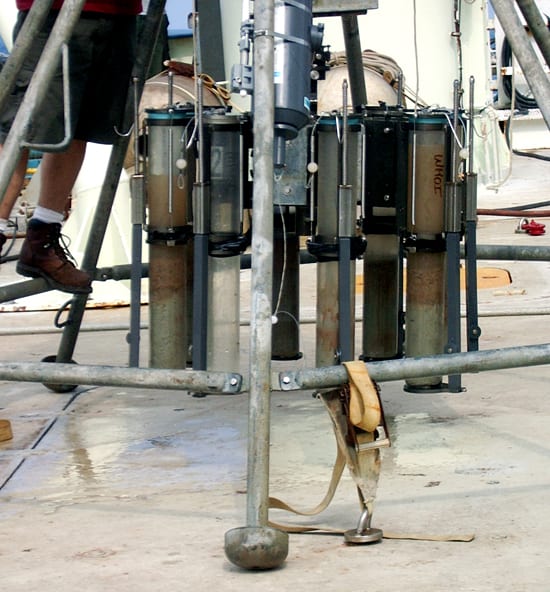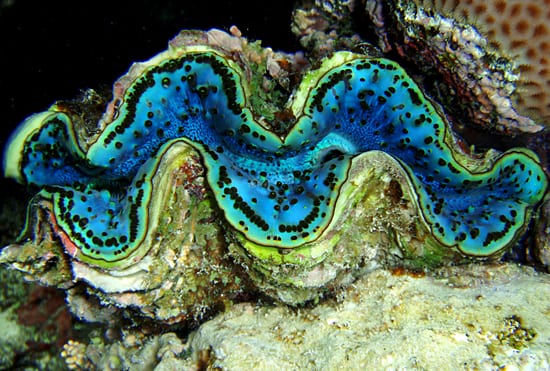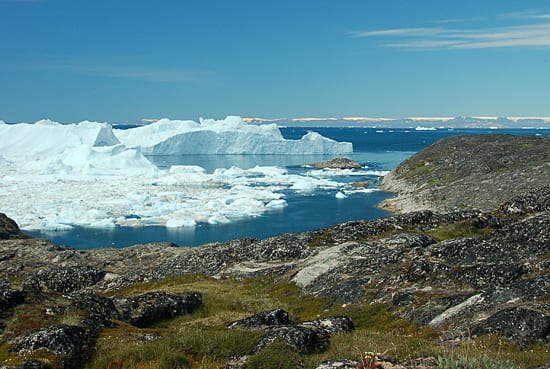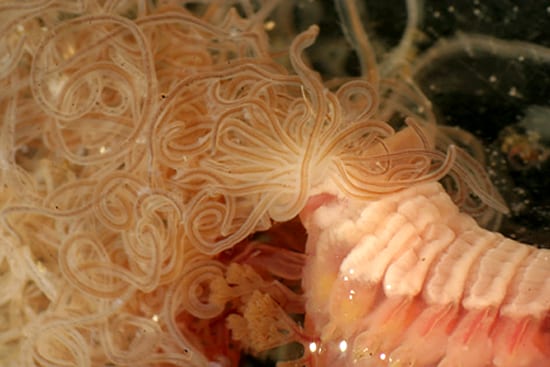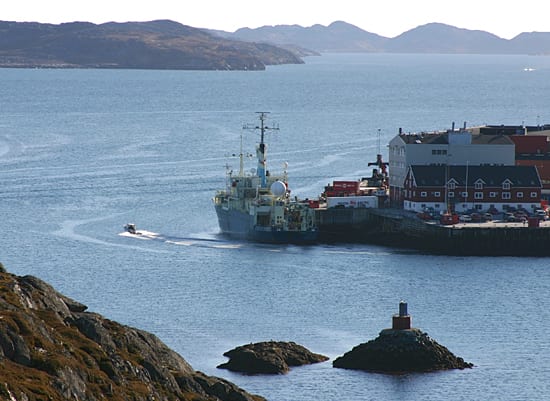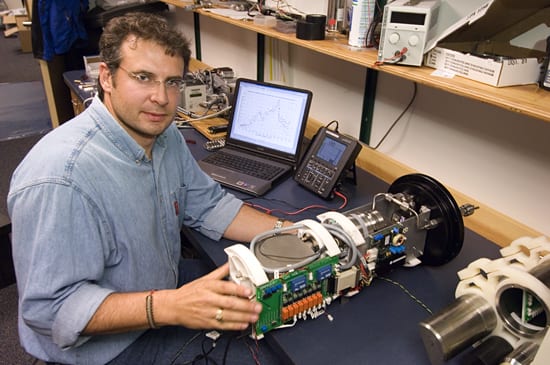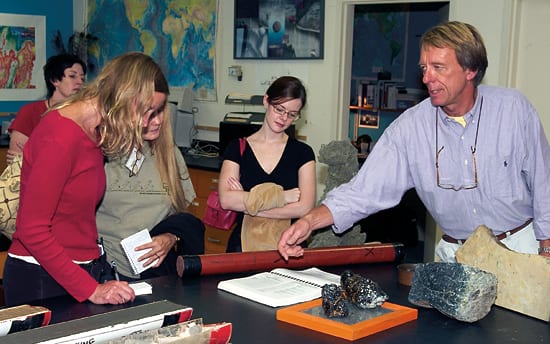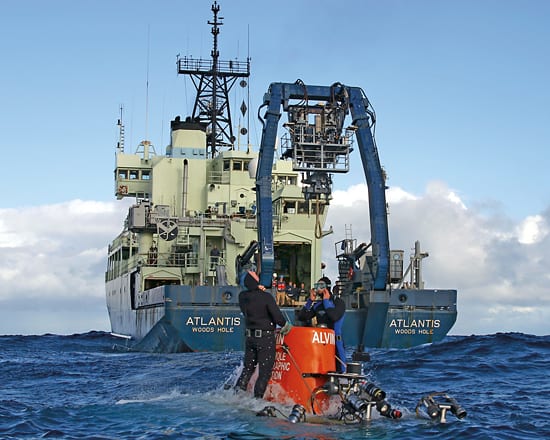Multimedia Items
Underwater Maintenance
Woods Hole Oceanographic Institution operates the U.S. Navy-owned Deep Submergence Vehicle Alvin for the national oceanographic community. Alvin, built in 1964 as the world’s first deep-ocean submersible, has made more than…
Read MoreKeeping Up with Current Events
WHOI scientist emeritus Sandy Williams describes the Modular Acoustic Velocity Sensor (MAVS) to the 2008 class of WHOI Ocean Science Journalism Fellows. Williams and physical oceanographer Jim Churchill led the…
Read MoreAmerican Mud
WHOI chemists Chris Reddy (left) and Liz Kujawinski take slices of mud from a sediment core extracted from the Columbia River margin. During a two-week expedition on the R/V New…
Read MoreBack from the Deep
Mark Johnson, an engineer at WHOI, holds the “D-tag” , a non-invasive temporary tag he designed that attaches to a whale and records ambient sounds and the whale’s motions as…
Read MoreLook and Learn
WHOI oceanographer emeritus George Hampson (white t-shirt, in the background) shows undergraduate students in the WHOI Summer Student Fellowship Program how to identify local jellyfish species, as they peer over…
Read MoreEyes on the Future of Oceanography
2008 marks the 40th year of the MIT/WHOI Joint Program in Oceanograhy/Applied Ocean Science and Engineering, one of the world’s premier marine science graduate programs. To mark the anniversary, WHOI…
Read MoreWhat’s in That Box?
Every year, undergraduates are selected to spend the summer doing research at WHOI, in the Summer Student Fellowship program. Soon after they arrive, the students learn what it’s like to…
Read MoreGetting a Grip on the Arctic
WHOI physical oceanographer Bob Pickart recovers a conductivity-temperature-depth (CTD) sampling rosette from a remarkably ice-free Beaufort Sea in September 2004. Pickart and colleagues have been studying the flow of waters…
Read MoreThe “Beta” Version
MIT/WHOI Joint Program student Stephanie Waterman holds the “beta boat,” a unique instrument she built with physical oceanographer John Whitehead and engineer Keith Bradley for her experiments on how ocean…
Read MoreCracking up in Greenland
This researcher stands where hours earlier there was a lake, filled with melted ice water. Once drained, through a massive crack, scientists could step inside the lake bed and learn what happened. Sarah…
Read MoreBehind a wall, a historic find
This spring, two blackboards from 1986 were unearthed during renovations of Smith Building in Woods Hole, 22 years to the day they were sealed away behind a new wall. Gene Terray had authored…
Read MoreUnder the volcano
Why study a volcano only on the surface, when you can also go under it? Fifteen MIT/WHOI Joint Program graduate students and their instructors explored the Venado caves near Arenal…
Read MoreDeep Waters on the Move
Deep Atlantic Ocean circulation, part of the “global conveyor” system, strongly affects climate. WHOI, U.S. and international researchers launched more than 200 data-gathering floats into the North Atlantic between 1994…
Read MoreTag! You’re it!
Engineering Assistant Jim Dunn, aboard R/V Oceanus, attaches a tagline to a mooring in the Gulf Stream in November 2007. The mooring was deployed as but one part of a…
Read MoreThe Muds of Time
Sediment accumulating on the bottom of the sea carries in it clues to the past, in the form of tiny shells, chemical compounds, and isotopes of elements that reflect climate…
Read MoreBlue Clam in the Red Sea
Giant clams, Tridacna, can have colorful mantle tissue, including bright blue. Eight species of Tridacna, most threatened by over-harvesting, live in shallow waters of the South Pacific and Indian Oceans.…
Read MoreWhere icebergs roam free
In Ilulissat, a coastal town in western Greenland, people don’t have to walk far to see millions of tons of icebergs calving away from the glacier each year into Disko Bay. Scientists from WHOI…
Read MoreRecording ice movement
This summer, geologist Mark Behn drilled 8 feet down into Greenland’s ice sheet and left seismometers at the bottom of the holes to record ice cracking and movement. Researchers will retrieve the…
Read MorePolychaete pasta?
Magnified under a microscope, the tentacles of a terebellid —a marine polychaete worm, also called the “spaghetti worm”—look like an impossible tangle of pink yarn or vermicelli. Those sticky tentacles…
Read MoreTop Choice
WHOI geologist Sarah Das spent days this summer in Greenland looking for the perfect waterfall. Not to photograph or to take a really cold swim. She needed falling water for…
Read MoreDoesn’t Look Green from Here
The research vessel Knorr rests in port in Nuuk, Greenland, in September 2007. The ship and crew arrived at the great island after deploying submerged autonomous launch platforms, or SALPs,…
Read MoreSmall, Sensitive Sensor
Richard Camilli, a chemist and engineer in the WHOI Applied Ocean Physics and Engineering Department, builds cutting-edge instruments for sensing molecules in seawater. His miniature mass spectrometer “Gemini” (shown here)…
Read MoreMaking News
Senior research specialist Jim Broda of the Geology and Geophysics Department displays sediment cores and rocks from the WHOI Seafloor Samples Lab to a group of visiting journalists. This week,…
Read MoreWhy is this Dive Platform Moving?
For more than four decades, WHOI’s deep-sea submersible Alvin has transported scientists through ocean depths of 2.8 miles. Now a new sub is being built to continue that legacy and bring people…
Read More
